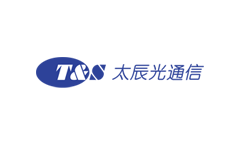Types of Fiber Optic Attenuators

A fiber optic attenuator is a passive device used to reduce the power level of an optical signal in free space or in an optical fiber. They have fixed types, step-variable and continuous-variable types.
Although Fiber Optic Attenuators are commonly used in SM (single mode) links, since this is where stronger lasers are used for distance transmission, multimode attenuators are also available.
The most common version of attenuators is male-to-female. These plug-type attenuators are simply installed on one end of a fiber optic cable, allowing the fiber optic cable to be plugged into a receiving device or panel.
There are also female-to-female (male) attenuators, typically used to install in a patch panel or to connect two fiber optic cables together. Variable attenuators are more expensive but useful for testing and can be adjusted from 1dB to 30dB.
dB rating is a measure of signal strength because sometimes you can confuse it with others.
Ⅰ. Two common applications of fiber optic attenuators
The first case is in a power level test. To test power level margins in fiber optic communication systems, optical attenuators are used to temporarily add a calibrated amount of signal loss.
In the second case, optical attenuators are permanently installed in the fiber optic communication link to properly match the optical signal levels of the transmitter and receiver.
Ⅱ. What are the types of optical attenuators?
There are four different types of attenuators, which can take many different forms and are usually classified as either fixed or variable attenuators. Also, based on the types of connectors, they can be classified into LC, SC, ST, FC, MU, E2000 type, etc.
1. Fixed attenuators: Fixed optical attenuator used in fiber optic systems may use various principles to function. Preferred attenuators use doped fibers or misaligned splices, as both are reliable and inexpensive.
In-line attenuators are included with jumpers. Another built-in attenuator is a small male-female connector that can be added to other cables.
Non-preferred attenuators typically use gap loss or reflection principles. Such devices can be sensitive to mode distribution, wavelength, pollution, vibration, temperature, and power bursts.
2. Loopback Attenuators: Loopback fiber optic attenuators are designed for testing, engineering, and burn-in stages of circuit boards or other equipment. It is suitable for SC/UPC, SC/APC, LC/UPC, LC/APC, MTRJ, and MPO for single-mode applications.
- +1 Like
- Add to Favorites
Recommend
- What Are the Common Fiber Optic Attenuators?
- What Are the Functions of the Fiber Optic Attenuators?
- Why Fiber Optic Attenuators Are Used in Fiber Optic Cable Transmission Lines?
- Fiber Optic Connectors Glass vs. Copper
- Knowledge about Fiber Optic Enclosures
- The Ultimate Guide to Fiber Optic Transceiver Modules
- Unveiling the Advantages of Fiber Optic Transceiver Modules
- Fiber Optic Patch & Splice Enclosures
This document is provided by Sekorm Platform for VIP exclusive service. The copyright is owned by Sekorm. Without authorization, any medias, websites or individual are not allowed to reprint. When authorizing the reprint, the link of www.sekorm.com must be indicated.


















































































































































































































































































































































































































































































































































































































































































































































































































































































































































